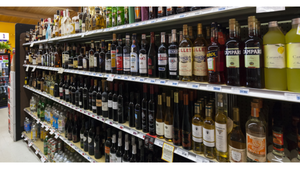W(H)ITHER COMMODITY BOARDS?
Like the rest of the produce industry, commodity boards representing specific fruits and vegetables have been forced to re-examine their relevancy in a business that's quickly becoming globally based and increasingly sophisticated.The court decision earlier this year that effectively shuttered the Washington Apple Commission is serving as a wake-up call for other such boards to update their charters,
July 14, 2003
Robert Vosburgh
Like the rest of the produce industry, commodity boards representing specific fruits and vegetables have been forced to re-examine their relevancy in a business that's quickly becoming globally based and increasingly sophisticated.
The court decision earlier this year that effectively shuttered the Washington Apple Commission is serving as a wake-up call for other such boards to update their charters, by-laws and programs, retailers and industry representatives told SN.
"I think there's concern there will be a domino effect," Mike O'Brien, vice president of produce for Schnuck Markets, St. Louis, said of the potential for more groups to face dissolution, or see their retail-level activities curtailed.
Some organizations have worked quietly along for years without contributing much beyond point-of-purchase signage or shipper directories; while others have become industry leaders, setting new benchmarks of service for their retailer customers. They're credited with developing programs that have helped revolutionize the retail produce business. These organizations played a key role in retailers' increasing use of -- and reliance on -- category management data and pricing information.
Of all the commodity organizations in existence, the WAC was seen as the leader and the trend-setter.
"They came to us with best practices, new ideas and not only our data, which we gave to them, but total-market data," O'Brien added. "That enabled us to look at the micro and macro and find out where we stood in relation to the macro, and to raise the bar, raise the category."
Other retailers agreed. Commodity boards like the WAC help the retailer connect to the consumer in new ways, by assisting in the development of consumer-driven marketing strategies that were new to the produce section.
"We've tried to take advantage of the expertise they offer," said Rick Noeth, senior vice president of fresh products, Gerland's Food Fair, an independent chain of 15 stores based in Houston. "With the loss of a commodity board, I think the consumer loses, because they do add value. They have offered demos, marketing funds, promotional funds and make their Web sites available to consumers for general information."
Commodity boards have faced lawsuits almost since their inception. In the WAC case, opponents argued that collecting assessments to pay for generic advertising and promotions violated their First Amendment right of free speech. While observers said such objections had a fair chance of standing up in court, many were stunned by the degree to which the court found its activities unconstitutional.
"What I think surprised everyone was that the decision was so much greater than any worst-case scenario that was predicted. That's what caught people off-guard," said Steve Lutz, executive vice president of The Perishables Group, Chicago, and former president of WAC.
"The conventional wisdom was that a revised apple commission might be a little different in that research activities would continue, information-gathering activities would continue, category management would continue -- but that turned out to be wrong," he said.
The near immediate shutdown hit some retailers harder than others, as fall promotion planning was about to begin. Now, absent the WAC's $40 million annual promotion budget, operators are looking for alternative sources of promotional and information support.
"I don't think we'll see an increase [in consumption] without the apple commission being directly involved," said Noeth. "It may not hurt as much the first year, but the second year I don't think you'll see consumption of fresh apples increase like it has in the past. I think the apple commission helped spur purchases, working in conjunction with retailers and wholesalers."
Schnuck's O'Brien said that the WAC established a benchmark for commodity boards and brought retailers to rely on them for more than just promotional support.
"It's part of the times, and I do understand the other side," he said. "Washington Apple's job was to promote apples globally for the whole state of Washington, and let's say that there was a glut of red delicious apples. But you're a supplier who doesn't sell red delicious; yet you're paying the same amount to the commission and they're not necessarily working on your behalf. That's where I think things started falling apart."
Indeed, a group of Washington state's leading growers last month announced they will join together in an alliance to continue providing the category management data the WAC generated for supermarkets. The seven shippers won't have the scope or scale of information to present to retailers, but they will include pears and cherries in their business, additions that stress compatibility and cross promotion as opposed to an all-or-none scenario, according to Lutz.
"When Coca-Cola comes in to see a retailer, they're not just talking about soft drinks, they're talking about all the beverages they have," said Lutz, whose firm is working with the growers to supply the same data it provided the WAC. "They're going to make recommendations on Dasani water and Minute Maid juices, as well as Coke products. You could draw a similar comparison to apples and pears."
Or apples and mushrooms. The industry observed an anniversary on June 25, marking the day two years ago that the U.S. Supreme Court ruled on a case similar to the WAC's, in which a majority ruled the Mushroom Council's use of assessments for advertising purposes was unconstitutional. As a result, the group's budget was reduced by 60% and its role confined to research and development.
"What we were left with is the direction that many of these organizations are going today anyway," said Bart Minor, president of the Mushroom Council. "They began heading in that direction even without the court cases."
Then, like now, the industry braced for the wholesale collapse of the commodity groups, but it never came. Rather, it seems individual cases are working their way through the legal system, in a trend that could provide long-term improvements in the way category information is distributed and used.
The United States Potato Board, Denver, is one organization that has evolved from a sleepy trade group to a category captain, of sorts, by driving producers to become more consumer-focused. In early 2000, it was decided to divert most of the group's $8 million budget from advertising to research, since officials decided they couldn't effectively put out a nationwide, advertising campaign of any substance.
The organization began buying and compiling data three years ago, and now uses it to directly influence the growth of potato sales in supermarkets.
"This type of data about potatoes had never been gathered before," said Carroll Little, the USPB's marketing/sales manager. "For example, people seem surprised that 66% of the country is now comprised of one- or two-person households. I think that was a little surprising to retailers, and I know it was to a lot of potato growers, because they live in rural areas and have big families; and tend to believe that most people are big families like them buying 10-pound bags of potatoes."
Little said USPB wanted to address the consumer the same way big consumer-packaged goods companies do. As a result, the group not only became more cogent to both producers and retailers, it developed a way to put the consumer back into the sales equation.
"Retailers are thinking about the consumer, but they're not the ones asking the consumer what they want out of a potato product," she said. "And then, along that supply chain, the growers and shippers are thinking of the retailer as their consumer -- not the consumer as their consumer."
Currently, the USPB works with six retailer partners across the country to gather volume and sales numbers, and test different initiatives. They've also started issuing publications that help retailers measure their own performance.
However, consolidation has created new competitors for the commodity boards, in that super-vendors, created to supply the nationwide chains, are equipped with myriad statistics and a variety of category information themselves.
"Because of the suppliers that we work with, it's already starting to shift over to them," said O'Brien of Schnuck's. "The sharp suppliers will take over category management and marketing funds. That'll be their key role now. Being a supply/demand-driven business, the cost of the product is going to equal out, and it's really not going to affect our gross margins. I don't see that as a problem."
Chris Hummer, produce manager at Days Market, Heber City, Utah, is another retailer who says suppliers have been more helpful all along, and rarely relies on commodity boards, beyond using POP materials in special displays.
"[This situation] won't impact us. I don't think consumers buy brand-name produce," he said, noting the commodity boards' practice of crafting a brand-like image for their products. "I know it works in the rest of the supermarket, but in produce I don't think they purposely seek out Chiquita or Dole bananas; they just want a good ripe banana they can eat. There's more concern about taste and appearance than who's selling it."
Even when dealing with suppliers, Hummer said the consumer's focus remains on product quality -- not the source of the item.
"If they get a bruised apple, they're going to say, 'That Days Market doesn't have good apples,"' he said. "They're not going to look at the PLU label and say. 'Washington apples are bad.' They're going to pin it on the store."
PROTEINS, TOO
Commodity boards aren't confined to produce. Beef and pork are among the proteins sanctioned by the U.S. Department of Agriculture to raise funds through a mandatory checkoff program -- and both are awaiting decisions on lawsuits that could have a significant impact on their futures.
The Cattlemen's Beef Board and the National Pork Board, along with allied organizations, were founded as part of the 1986 Farm Bill that created marketing programs for producers. For example, "Pork. The Other White Meat" debuted the very next year. Dallas Hockman, the Des Moines, Iowa-based NPB's vice president of demand enhancement, said the industry is awaiting a decision on a First Amendment case under review by the Circuit Court of Appeals. The initial decision ruled the checkoff unconstitutional on those grounds. But the work of the board, and the National Pork Producers Council, goes on, funded by a checkoff of 40 cents per $100 value.
"We've moved away from promotional things that were simply buying space in ads or whatever, to more of what I call long-term business principles," Hockman said. "A promotion may last two weeks, and may be very effective, but we're more interested in long-term outcomes, where once the idea is implemented, it's there 52 weeks of the year."
The Cattlemen's Beef Board, Denver, collects $1 per head for its beef checkoff programs, amounting to about $55 million a year. Monte Rees, chief operating officer, said there have been four lawsuits challenging the organization's legitimacy; it won three and lost one. Two cases -- including the losing case -- are on appeal, he said. Rees said the commodity boards the CBB works with earned their pay recently with the mad cow scare in Canada, working as a source of consumer media information.
"It works. We found that consumer awareness [of mad cow disease] nearly doubled, but confidence in the U.S. beef supply did not change," he said. "In January 2003 it was 87% and in June it was 85% -- statistically negligible."
Both organizations take some credit for reversing consumption declines: Rees cited statistics showing consumer spending on beef was at an all-time record high last year, up $14 billion since 2000. The NPB released figures showing its "Pork. The Other White Meat" slogan, now 16 years old, is now recognized by 88% of consumers polled as part of an annual tracking study. Similarly, the overall rating of pork has increased 13% over the past decade.
"A lot of our efforts are put forth in influencing the acceptance of our products by consumers," Hockman told SN. "Much of it deals with getting a message out there, and then collecting research in regards to consumer trends, buying patterns and marketplace activity."
About the Author
You May Also Like




